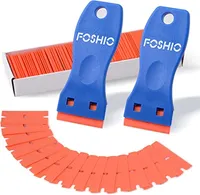How to clean spilled wax – from wood floors, upholstery, and walls
Don’t cry over spilled wax – here is how to clean it up


Candles and wax melters are found in almost every home around the world, and as much as we try to be careful with them, it is near impossible to avoid spilling wax at least once – whether we are moving our candles around or have blown them out just a little too vigorously.
Whether you need to clean candle wax from carpets or have knocked wax down your wallpapered walls, remaining calm and using some expert cleaning tips will remove every trace of the accident and restore your home to new again.
Here, professional cleaners have shared their top tips for cleaning spilled wax from a range of surfaces, even when it has dried.
How to clean spilled wax
While wax is not the easiest of substances to clean up, it can certainly be done – especially if you use the right tools for each job.
1. Cleaning wax from wooden floors

When cleaning hardwood floors and treating laminate, removing spilled wax needs to be done with care or you could end up scratching the surface. To tackle this task, it is best to let the wax dry completely before slowly removing the wax in chunks, says Ahmad Jamal, cleaning expert at CleanersAdvisor.
‘One way to remove wax from wooden floors is to freeze the wax by placing ice cubes in a plastic bag and placing it on the wax until it hardens,’ Ahmad suggests. ‘Once the wax has hardened, use a plastic scraper or old credit card to gently remove the wax. After removing as much wax as possible, use a clean cloth or paper towel to wipe the area clean. For any remaining residue, use a cloth dampened with warm water and mild dish soap to gently clean the area.’
Plastic blade scraping tool | $10.99 at Amazon
This plastic blade scraping tool is ideal for a whole range of household cleaning, such as removing wax carefully and cleaning glass surfaces without the danger of scratching the surface with a metal blade. They are also far safer.
You can attempt to remove the wax from the floor while it is wet, but this needs to be done with care to prevent burning your skin, Ahmad adds.
Design expertise in your inbox – from inspiring decorating ideas and beautiful celebrity homes to practical gardening advice and shopping round-ups.
You can use this method when the wax is still wet after first spilling, or use a hair dryer to re-melt the wax in place, Ahmad says. Make sure to immediately wipe it up with a clean cloth or paper towel, continuing this process until all the wax has been removed. Afterward, clean the area with warm water and mild dish soap as mentioned earlier.’

Ahmad is a self-proclaimed 'clean-freak', with years of experience tackling tough cleaning projects and advising others on how to deal with the worst of messes.
2. Removing wax from upholstery

The last thing we want to be doing when cleaning upholstery is worrying about wax, so preventing spilling wax on furniture by moving it away from delicate surfaces is the best method.
If you have got wax on your home’s fabrics, however, then care and patience is needed to help remove it, experts say.
‘To get wax out of fabric upholstery, I recommend putting the textile in the freezer, if possible, to make the candle wax hard and thus easier to remove. You can then try to gently remove the hardened wax with your hands.
'If this method isn’t possible, then try using heat with a tool like an iron or a steamer,’ suggests Frej Lewenhaupt, textile expert, co-founder, and CEO of Steamery. ‘Place a paper towel on the fabric and use the iron/steamer to heat up the wax underneath. The towel will absorb the melted wax and you can treat any remaining stain with a dedicated upholstery stain remover.’

Frej Lewenhaupt is the dedicated and creative Co-founder & CEO with demonstrated history of working with design which he uses to design the best, most effective clothing care devices for household use.
If you have upholstery that cannot be cleaned with a steamer or subjected to any form of heat, then another option is to manually remove the hardened wax with a scraper or a dulled knife, says Millie Hurst, Solved section editor at Homes & Gardens.
Use the scraper to slowly peel the wax away from the fabric, using a vacuum cleaner with an upholstery attachment to pick up any loose sections and crumbs as you work,’ she recommends. ‘When I spilled some wax on my armchair, I found that using some warm water and a small amount of dish soap was a great follow-up solution to help remove some of the leftover residues and lift the stain too,’ she adds. ‘Just make sure to blot the stain and not rub to prevent spreading the waxy residue around.’

Millie Hurst is Section Editor at Homes & Gardens, overseeing the Solved section, which provides readers with practical advice for their homes. Millie has written about and tried out countless cleaning and DIY hacks in the six years since she became a journalist, and has worked in both London and New York.
3. Scraping wax from walls

Cleaning walls that have been coated in wax can be tricky, especially if you are trying to maintain the look of the wallpaper or paint beneath. Seeing as we cannot simply paint over the wax or any residue, taking your time to remove it is vital.
The only way to remove this wax is to apply heat carefully, and in small sections, says professional cleaner Ahmad Jamal, as scraping may pull away paper or paint.
‘Use a hair dryer to heat the wax until it melts, then immediately wipe it up with a clean cloth or paper towel,’ he suggests. ‘Another option is to place a clean section of a brown paper bag or baking paper over the wax and use a warm – not hot – iron to melt the wax and transfer it onto the paper. Continue this process until all the wax has been removed.
Once you have removed the bulk of the wax you can once again use a solution of warm water and some dish soap to clean away residue and blot it dry with a clean towel.
FAQs
What dissolves spilled wax?
Candle wax is usually oil-based, meaning water will have little to no effect – even when it is boiling. Instead, opt for a solvent that dissolves oil to help break down the spilled wax and lift it from whatever surface it is covering – just make sure to test the solvent on an inconspicuous spot first to ensure it doesn't stain the material. Krud Kutter, at Walmart, is able to cut through grease, oil and wax so it's handy to have in your cleaning collection.
Does hot water remove wax?
Boiling water can help to melt wax left over in a glass jar if you wish to clean it out, but it may not be ideal for removing spilled wax from surfaces. Boiling water can be very damaging to your home furnishings and flooring, making it less than ideal if you want to remove spilled wax and restore the area to its original appearance.
Cleaning spilled wax can be a labor of love, but it is essential that you do it right to prevent causing more damage or leaving any remnants of solid wax behind.

Chiana has been at Homes & Gardens for two years and is our resident 'queen' of non-toxic living. She spends most of her time producing content for the Solved section of the website, helping readers get the most out of their homes through clever decluttering, cleaning, and tidying tips. She was named one of Fixr's top home improvement journalists in 2024.
